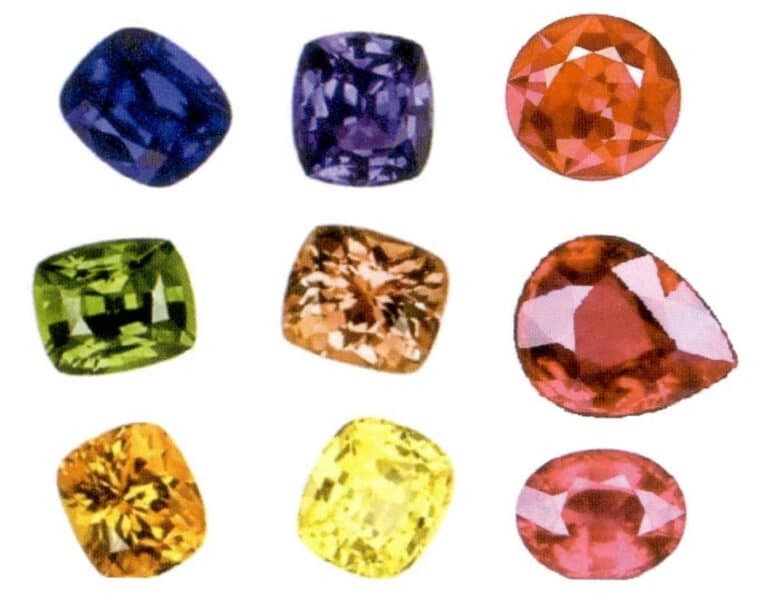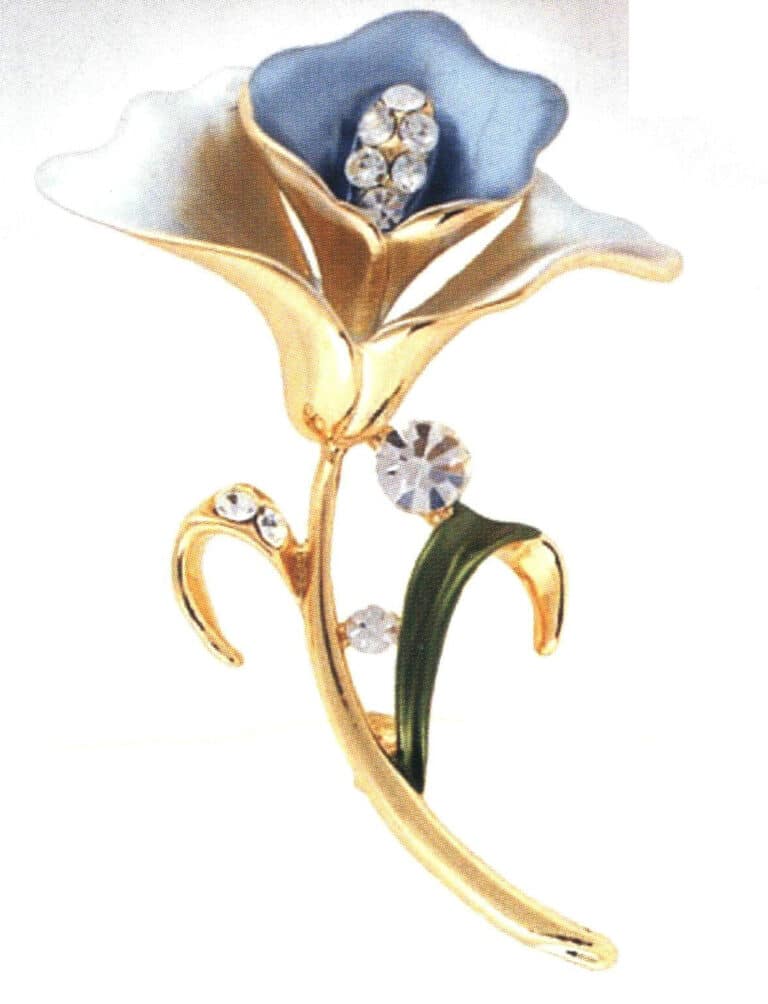Cosa definisce i gioielli: Origini, tipi e funzioni svelati
Explore the Evolution, Classification, and Impact of Jewelry on Culture and Fashion
Introduzione:
This document provides a comprehensive guide to jewelry, covering its definition, origins, classifications, and functions. It explores the narrow and broad definitions of jewelry, from finely crafted accessories made of precious metals and gemstones to a wider range of decorative items. The origins of jewelry are traced back to practical needs in ancient times, evolving into symbols of power, totem worship, and amulets for protection. The classification section details various types of jewelry based on materials like metal and non-metal, craft techniques such as inlay and special crafts, design purposes like commercial and artistic, gender-specific designs, usage, and wearing positions. The guide also delves into the functions of jewelry, including decoration, representation of status, value preservation, health care, and more. Additionally, it examines the shape, color, and texture of jewelry, explaining how different colors evoke various psychological perceptions and how textures and luster contribute to the overall appeal of jewelry pieces.
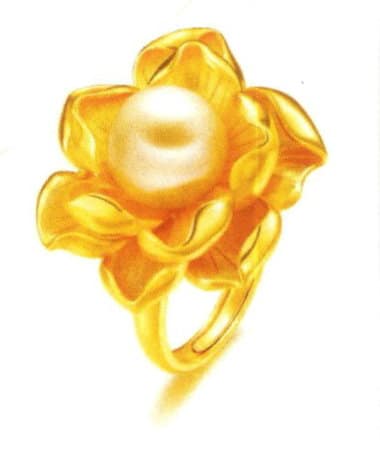
Pearl-Inlaid Ring
Indice dei contenuti
Section I Definition and Classification of Jewelry
1. Definition of Jewelry
(1) Narrow Concept of Jewelry
In the narrow sense, jewelry refers to finely crafted accessories made from precious metal materials and natural gemstones, primarily intended for personal adornment.
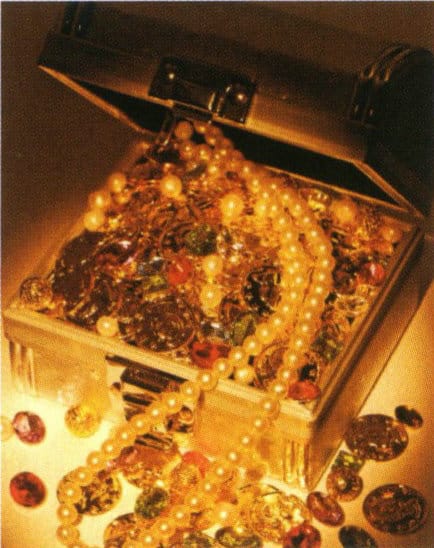
(2) Jewelry in the Broad Sense
In a broad sense, jewelry refers to items made from various materials used for personal adornment and related environmental decoration. Broadly defined jewelry includes narrowly defined jewelry, ornaments, and other decorative objects.

Pearl-Inlaid Ring
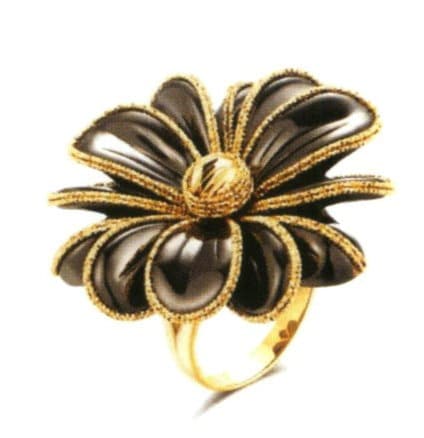
Enamel Ring
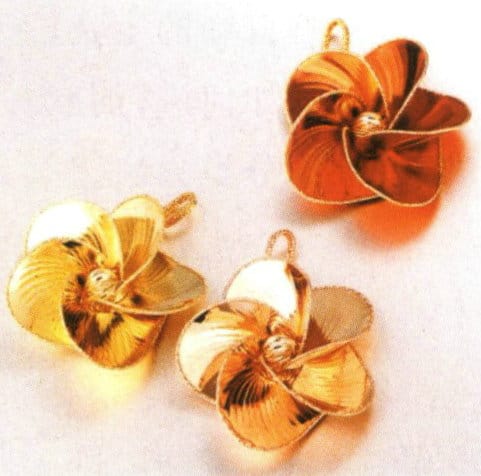
Colored Gold Pendant
2. The Origin of Jewelry
(1) Practical Needs
Most body ornaments from the Paleolithic era were closely related to productive labor and had practical functions. For example, the animal teeth and horns in the necklaces of the Shandingdong people could be used for gathering food; perforated bone needles and awls worn in the hair could be used for sewing clothes and stripping animal skins; and the stone axes carried around could be used for digging and chopping. These were the earliest forms of jewelry and the starting point of decorative evolution.
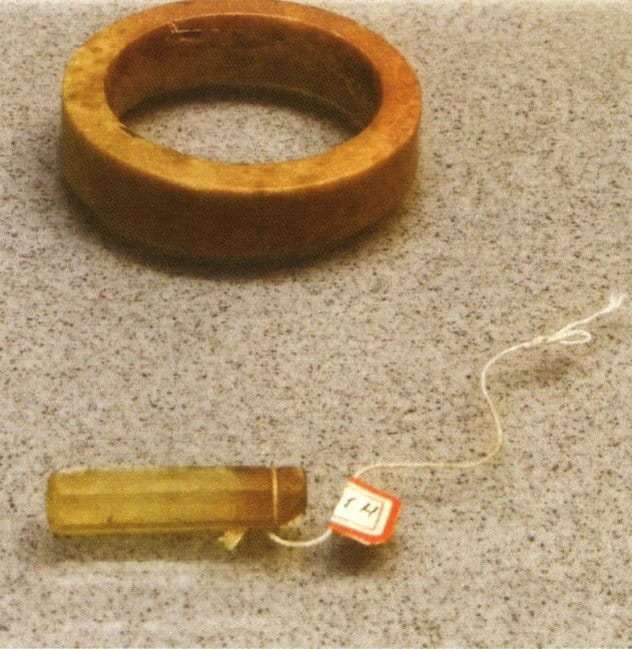
(2) The Need for Survival
In primitive society, during the struggle against nature, humans often hung animal skins, horns, and other items on their heads, arms, wrists, or feet to protect themselves from wild beasts. On the one hand, this was to confuse predators by making themselves resemble prey; on the other hand, these animal skins or horns served as defensive or offensive weapons. Stones, animal bones, or animal teeth are worn around the neck, waist, or wrists. Besides being humans’ earliest unconscious decorative acts, their true function was likely for counting or record-keeping.

Life Scenes of Primitive Ancestors

Scene of Primitive Yue People Going to War
(3) Symbol of Power
To primitive people, the reason why fierce beasts were full of power was believed to be their sharp claws and teeth, strong bones, and beautiful fur, which must have played an important role. Therefore, after capturing these fierce beasts, primitive people would string together their bones, teeth, and other parts to wear on their bodies, believing that this could absorb the beast’s power, thereby overcoming wild animals and gaining some spiritual comfort and strength from these primitive ornaments.
These brave individuals often liked to use bright and eye-catching items that were easy to recognize, decorating themselves with beautiful feathers, sharp teeth, rare shells, and even precious “beautiful stones” (jade) to demonstrate their authority and power.
(4) Totem Worship
The sun, moon, stars, wind, rain, thunder, and lightning were originally ordinary natural phenomena, but to primitive people, they all possessed some magical power. Primitive people lived closely with nature, accompanied by the sun, moon, stars, rivers, and birds and beasts, and they deeply worshiped these things that existed in the natural world.
Over time, the forms of these things became deeply imprinted in their minds and turned into totems with magical powers. They regarded them as their ancestors or protective deities or saw them as blood relatives of their clan or tribe to be worshiped, even incorporating these totems into their jewelry.
Religion held an important place in the lives of primitive humans. People expressed totem worship and performed religious rituals by wearing ornaments made of animal horns, fur, metal, etc. These religiously charged ornaments became an indispensable and important part of primitive human life.
(5) Amulets
Primitive people believed that all things had souls and that souls were divided into good and evil: the good spirits brought happiness and joy to humans, while the evil spirits bring disaster and disease. To prevent these evil spirits from coming close and to receive protection from benevolent spirits, primitive people strung together shells, stones, feathers, animal teeth, leaves, and fruits with ropes and wore them on their bodies. They believed these items possessed a supernatural power invisible to the human eye and that wearing them would bring blessings and drive away evil spirits. These items, which served protective and exorcising functions, were later worn on the body as certain ornaments, becoming a specialized type of jewelry. This custom was preserved, and jewelry gradually came to embody more beautiful meanings and mysterious colors.
(6) The Ornament Itself
In human evolution, as the sensitivity of the sense of smell gradually declined and the sensitivity of vision gradually increased, people became more sensitive to images, colors, and light, and their aesthetic ability gradually improved. The emergence of primitive jewelry was precisely due to this human aesthetic need.
This aesthetic need is inevitably intertwined to attract the opposite sex. This stage represents a transition from practicality to aesthetics. During this stage, jewelry transformed from portable tools to religious symbols and aesthetic functions.

With the improvement of productivity, economic relations and social structures changed. At this time, people demanded advancements in jewelry craftsmanship and exquisite patterns and designs from an aesthetic perspective and raised higher requirements for the quantity and materials of jewelry. The types and quantities of accessories greatly increased, and precious stone jewelry appeared in large numbers, becoming an important symbol of wealth and social status.
3. Classification of Jewelry
3.1 Classification by Material
(1) Metal Jewelry
Metal jewelry: jewelry made from gold (Au), silver (Ag), platinum (Pt), palladium (Pd), and various other metal composite materials.
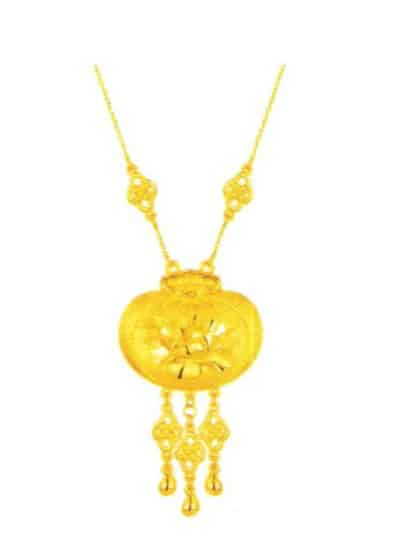
Gold Pendant
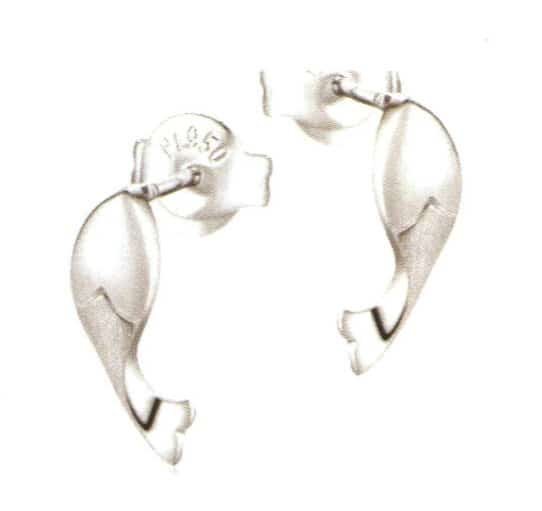
Platinum Stud Earrings
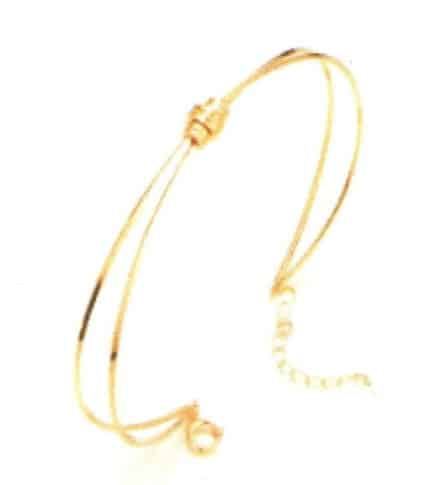
K Gold Bracelet
(2) Non-Metal Jewelry
Non-metal jewelry: Jewelry made from various non-metal materials.
① Gemstone materials: Diamond, emerald, jade, pearl, etc.
② Non-gemstone materials: Glass, shell, silk, wood, porcelain, enamel, plastic, etc.

Jadeite Pendant

Hetian Jade Pendant

Ciondolo in ceramica
3.2 Classification by Craft Techniques
(1) Inlaid Gemstone Jewelry
Inlaid gemstone jewelry: Various methods, such as prong setting, bezel setting, etc., are used to fix gemstones, jade, and other materials onto jewelry. The base material for inlaying is generally metal, such as gold, silver, platinum, etc.
(2) Non-Inlaid Jewelry
Non-inlaid jewelry (pure metal jewelry): Jewelry made directly using metal materials.
(3) Special Craft Jewelry
Special craft jewelry: Jewelry made using special techniques. These techniques include granulation, mokume-gane, enameling, filigree, dance (kingfisher feather inlay), etching, metal weaving, etc.

Metal Weave Pendant

Filigree Art Pendant

Enamel filigree pendant
Knowledge Link – Introduction to Related Techniques
The granulation technique involves dripping liquid metal into water to form metal beads of various sizes and then welding these tiny gold beads together to create specific patterns.
The etching technique uses strongly acidic solutions to corrode the metal surface, creating special textures or patterns on the metal.
The enameling technique is a metal decoration process that applies colored glazes to the surface of a metal base. After firing, the metal surface forms a glossy, vividly colored glassy layer, resulting in a highly decorative effect.
3.3 Classification by Design Purpose
(1) Commercial Jewelry
Commercial jewelry, as the name suggests, focuses on commercial profit. Most people often accept this type of jewelry, which aligns with most people’s aesthetics, can be mass-produced using current craftsmanship and technology, is moderately priced, and meets market consumption demands and fashion trends.
(2) Artistic Jewelry
Artistic jewelry usually does not consider price and uses a wide range of materials, often inexpensive ones such as plastic, ceramics, copper, iron, and aluminum. The themes of the jewelry often express the designer’s emotions and feelings or commemorate and narrate special stories about people and events. For example, Dalí’s lip brooch outlines the lips with rubies and uses pearls to represent teeth, making it captivating, eye-catching, unique, and embodying a surrealist style.

Enamel filigree pendant

Enamel filigree bracelet

Lip brooch
3.4 Classification by Wearer's Gender
(1) Men’s Jewelry
As the name suggests, men’s jewelry is specifically designed for men, aiming to showcase personal character and enhance one’s taste, including all accessories except clothing, such as glasses, swords, cufflinks, rings, necklaces, watches, etc.
Knowledge Link
Characteristics of men’s jewelry: clear and bold lines, rugged, and generous design.
Motivations for men wearing jewelry:
① symbolizing wealth and status;
② highlighting masculinity and expressing independent personality;
③ conveying certain meanings;
④ imitating someone they admire.

Men's leather bracelet

Men's gold-plated bracelet
(2) Women’s Jewelry
The difference from men’s jewelry is quite obvious. Women’s jewelry is mostly designed to be delicate, with beautiful shapes, bright colors, and strong luster. Women have different dress styles and taste preferences, so their jewelry also varies. Some are luxurious and elegant, some are refined and unique, some are avant-garde and fashionable, and some are subtle and restrained.

K Gold Earrings

Filigree Pendant

Filigree Necklace
3.5 Classification by Jewelry Usage
Jewelry can be classified according to its use into practical, artistic, commemorative, traditional, and symbolic jewelry (Xu Yaohua, 2011).
(1) Practical Jewelry
Practical jewelry has certain functional purposes, such as tie clips for securing ties, hairpins for tying and fixing hairstyles, and brooches for fastening shawls. They are not purely decorative items but serve practical functions in clothing coordination.

Agate-inlaid wooden comb

Gold Hairpin

Gold Hair Crown
(2) Artistic Jewelry
Artistic jewelry refers to jewelry that emphasizes artistic aesthetics. This type of jewelry is not heavily commercialized and is mainly appreciated as artwork and collectibles.
(3) Commemorative Jewelry
Commemorative jewelry is created to commemorate events with special significance (such as coming-of-age ceremonies, weddings, etc.) or people. Common commemorative jewelry includes engagement rings, wedding rings, etc., which are essential tokens and symbols of remembrance.

Dragon and Phoenix Double Happiness Bracelet

K Gold Couple Rings
(4) Traditional Jewelry
Traditional jewelry is often associated with a specific historical context, reflecting unique customs, cultural connotations, and characteristics of a particular region, ethnicity, religion, or family. For example, the Miao ethnic group has had the custom of “using coins as decoration” from ancient times.
(5) Symbolic Jewelry
Like commemorative jewelry, symbolic jewelry carries special spiritual connotations and meanings, often using some symbolic shapes or elements to express emotions. For example, the “heart” shape and the Chinese character “爱” (love) symbolize love in jewelry; different birthstones represent the lucky stones for people born in different months; butterflies symbolize happiness, and so on.

3.6 Classification by Wearing Position

Spider brooch (chest and waist accessory)

K gold belt buckle (chest and waist accessory)

Silver bracelet (hand and foot accessory)
4. The Functions of Jewelry
Knowledge Link
According to Maslow’s hierarchy of needs theory, jewelry belongs to self-actualization, a higher-level human need. In other words, jewelry is not necessary for people at the stage of meeting basic needs.

(1) Decorative Function
The decorative function of jewelry is reflected in the following aspects.
① Adornment: Achieving a better visual effect.
② Concealment: To reduce or eliminate defects.
③ Complement: To use the shape and tone of jewelry to contrast or highlight a person’s facial features and demeanor.

A lady wearing a jade set

A lady wearing a gold set
(2) Functional Use
The functional uses of jewelry are reflected in the following aspects.
① Representational function: serving as a symbol of social status, identity, and wealth.
② Practical functions: jewelry hairpins, tie clips, buttons, ring watches, ring thermometers, pendant watches, perfume pendants, etc.
③ Gift-giving function and commemorative function.
(3) Value Preservation Function
Some jewelry uses large-carat, high-quality gemstones that are rare and precious, and their value is undoubtedly increasing. Some pieces of jewelry, although made from ordinary materials, rely on the ingenious design and craftsmanship of master artists or skilled artisans, making them unique or exceptionally creative, belonging to collectibles or artworks. These pieces of jewelry also has relatively high added value and a certain degree of value preservation.

Republic Medal (Image source: Xinhua Net)

Pure gold necklace

Jadeite necklace

Hetian jade pendant
(4) Health Care Function
The health functions of jewelry include two aspects. First, jewelry is often used as raw material in pharmaceutical products and has certain medicinal values. For example, pearls are rich in amino acids; pearl powder has detoxifying, eye-brightening, heat-clearing, and calming effects. It can also make skincare products that whiten, reduce spots, and enhance skin radiance. Similarly, amber has been used as a medicinal material in traditional Chinese medicine since ancient times, with sedative, calming, and diuretic effects. Second, jewelry can massage the body’s meridian acupoints, providing health benefits, such as cinnabar bracelets.

Perla

Ambra

Cinnabar bracelet
(5) Other Functions
Other jewelry functions refer to jewelry’s derived functions when combined with high technology.

Smart Bracelet

Smart Ring
Copywrite @ Sobling.Jewelry - Produttore di gioielli personalizzati, fabbrica di gioielli OEM e ODM
Section II The Shape, Color, and Texture of Jewelry
1. Understanding Color
(1) The Three Primary Colors
Red, yellow, and blue are the primary colors in standard colors. Mixing them in certain proportions can produce other colors but cannot be created by mixing other colors.
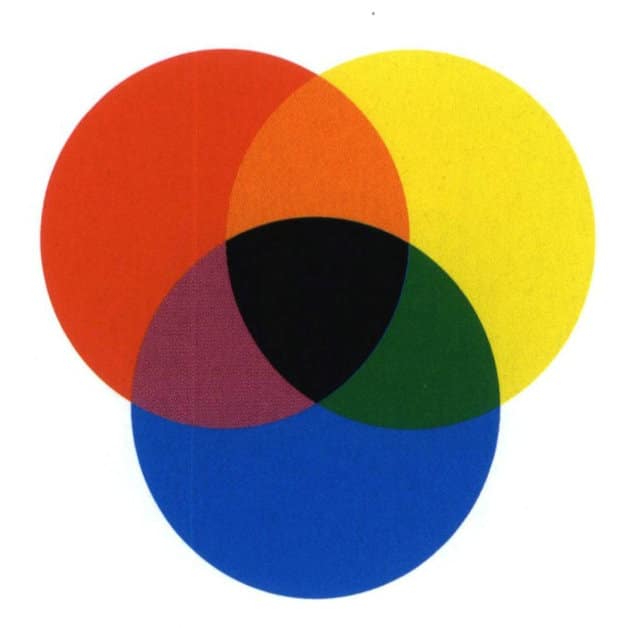
Red, yellow, and blue primary colors

Primary colors and secondary colors
(2) Secondary Colors
Secondary colors, also known as “intermediate colors,” are hues created by mixing any two of the three primary colors in different proportions. Different ratios can produce various secondary colors, such as red and yellow combining to form orange, yellow and blue forming green, and blue and red forming purple.

Color wheel

Colors of different brightness levels
(3) The Three Elements of Color
The three elements of color refer to the three attributes of color, namely brightness, hue, and saturation, which are the basic attributes of every color. Different colors have different brightness, hue, and saturation.
Brightness refers to the lightness or darkness of a color. Different brightness levels result in varying depths, allowing the same color to display rich layers.
Hue refers to the characteristic that distinguishes one color from another; simply put, it is the appearance of the color. Red and green are two different hues. This is an important basis for distinguishing colors.
Saturation refers to the saturation or intensity of a color. The higher the saturation, the more vivid the color. Adding white, black, gray, or even complementary colors can reduce saturation and weaken the vividness of the color.
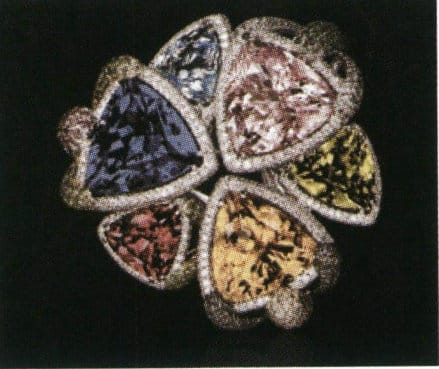
Low Saturation

Medium Saturation

High Saturation
2. Color and Psychological Perception
(1) Red
Red is one of the primary colors located at the long-wave end of the visible spectrum. It has an expanding and advancing feel, representing auspiciousness, joy, passion, and more. In nature, there are many red gemstones and jade stones. Red gemstones with good quality and vivid colors are very popular. Common red gemstones include ruby, spinel, garnet, tourmaline, red coral, blood amber, southern red agate, and rhodochrosite.

Red Enamel Fruit Pendant
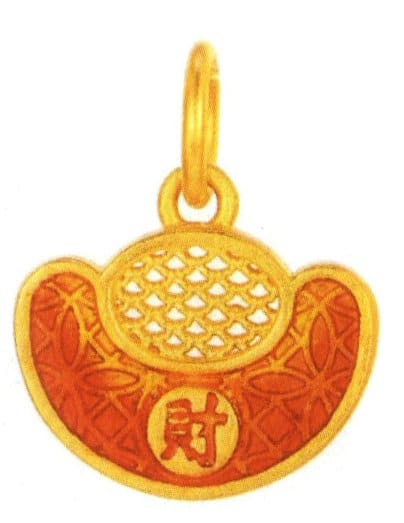
Red Enamel Yuanbao Pendant
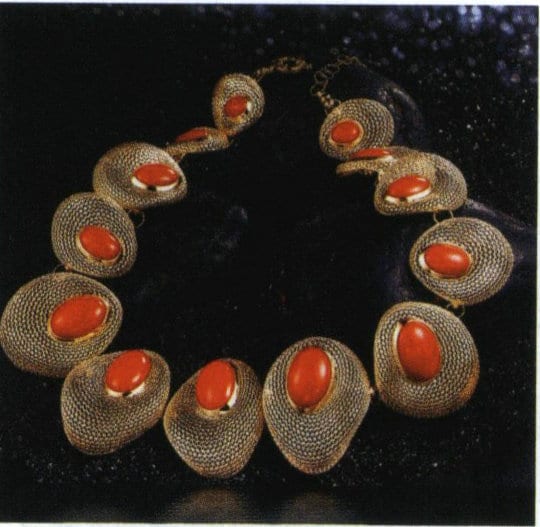
Red Coral Necklace
Knowledge Link
Red coral is an organic gemstone, ranked alongside pearls and amber as one of the three major organic gemstones. Since ancient times, it has been regarded as a symbol of wealth and good fortune, representing happiness and eternity.
(2) Yellow
Yellow has a high brightness, creating a sharp and expansive feeling. Yellow symbolizes wisdom, honor, loyalty, hope, joy, brightness, and nobility and is often considered a symbol of intellect. A slightly deeper yellow is bright and exudes a sense of nobility. Common yellow gemstone jewelry includes diamonds, chrysoberyl, yellow sapphires, citrine, spessartine, topaz, zircon, and yellow spodumene. Yellow gold jewelry is also very popular among consumers.

Yellow K gold ring

Pure gold pendant
(3) Green
Green is graceful and lyrical, with a calming effect on the nerves. Green often symbolizes nature, growth, freshness, hope, fairness, peace, and happiness. Common green gemstones include emeralds.

Green colored-gold ring

Emerald green earrings
Knowledge Link
The emerald and diamond crown shown on the below was specially commissioned around 1900 by the German Count Donnersmarck for his second wife. The crown features 11 rare pear-shaped emeralds and is the most expensive emerald and diamond crown ever made in the history of Chaumet Paris. It sold for a staggering 70 million RMB at the 2011 Sotheby’s Spring Auction in Hong Kong, setting a world record for headpiece auctions then.

(4) Blue
Blue is a color that contracts and is introverted. Pinkish blue is fresh and elegant; dark-toned grayish blue appears calm and easily matches other colors. Blue symbolizes confidence, eternity, truth, authenticity, silence, and calmness. It is a color liked by many, resembling both the sky and the ocean—vast and peaceful. Blue gemstones, such as blue diamonds, sapphires, tanzanite, aquamarine, tourmaline, spinel, topaz, zircon, kyanite, and amazonite, are highly sought after in the jewelry world.

Blue colored-gold pendant

Blue colored-gold earrings

Aquamarine earrings
(5) Purple
Purple symbolizes authority, respect, nobility, elegance, faith, and solitude. Generally, darker purples are considered negative colors, while lighter purples connote elegance and charm, and blue-purple symbolizes sincere love. Common purple gemstones include amethyst, purple sapphire, fluorite, beryl, spinel, lepidolite, purple tourmaline, kyanite, and taffeitite.

Sugilite pendant

18K purple gold bracelet
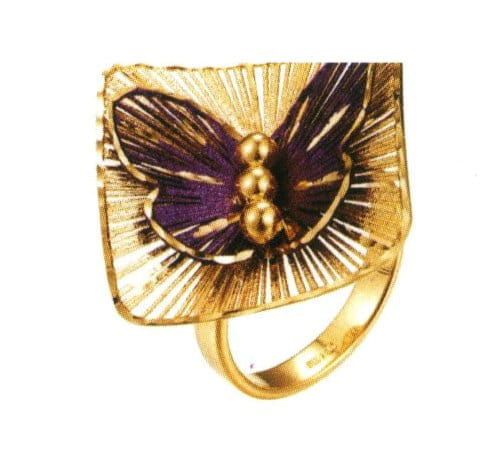
Lavender gold ring
(6) Black
Black symbolizes mystery, loneliness, darkness, pressure, seriousness, and momentum and is a common color for formal wear. Common black gemstones include black tourmaline, onyx, obsidian, crystal, diamond, opal, rutilated quartz, and black zircon.

Black leather bracelet

Black leather wristband
Knowledge Link – Mourning Jewelry
Mourning jewelry can be traced back to the Middle Ages. In 17th-century Europe, wars were frequent, plagues spread, and the air was filled with the scent of death. Mourning jewelry emerged during this time. Common elements included skulls, coffins, and more. Besides gold and gemstones, materials such as jet, agate, and tortoiseshell were also used. This trend reached its peak during the Victorian era.
(7) White
White does not overstimulate, nor is it too low-key. White most easily evokes the image of snow, drawing attention, yet it can also appear monotonous and empty. White also has an inviolable character, not allowing other colors to taint it. White is suitable for people of any age and any clothing. Common white gemstones include diamonds, crystals, and topaz.

Diamond Necklace

Diamond Pendant

White enamel pendant
(8) Gold and Silver
Gold and silver are highly glossy and eye-catching colors with a metallic luster. Gold is magnificent and symbolizes wealth and prosperity; silver carries the same symbolic meaning but is milder than gold, featuring gray characteristics. When coordinating multiple colors, appropriately using a bit of gold or silver can create a bright, luxurious, and splendid visual effect.

Yellow K gold bracelet

Pure gold Ruyi ornament

White gold bracelet
3. Color and Emotion
(1) The Cold and Warm of Colors
The cold and warm colors are psychological associations people make based on the cold or warm sensations of objects, which are directly related to hue. Hue itself has no difference between cold and warm, but people, based on life experience, connect things of the same hue, which leads to the distinction between cold and warm hues.
People often use different vocabulary to describe the cold and warm feelings of colors: warm colors are bold and passionate; cool colors are delicate, transparent, calm, thin, spacious, and rational.
Warm colors: Mainly refer to red, orange, yellow, and other colors. When people see red, orange, yellow, and similar colors, they associate them with the sun, flames, blood, etc., which often give a feeling of warmth and passion. Common warm-colored materials in jewelry include gold, red agate, ruby, amber, and so on.
Cool colors: Mainly refer to blue, cyan, purple, and other colors. People often associate these colors with the blue sky, the sea, and so forth, which give a feeling of coldness, openness, and calm. Common cool-colored materials in jewelry include lapis lazuli, sapphire, amethyst, etc.
Colors such as green and brown, which neither feel warm nor cold, are called neutral colors.
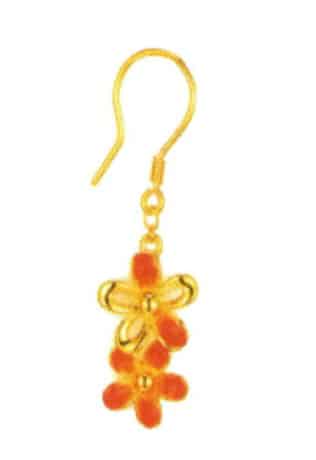
Red Enamel Earrings
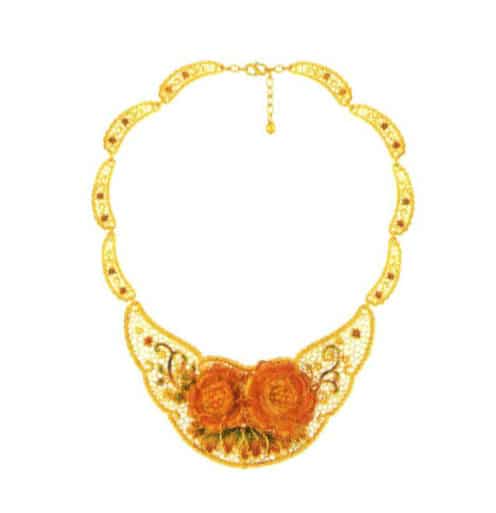
Red Enamel Necklace

Purple Enamel Pendant
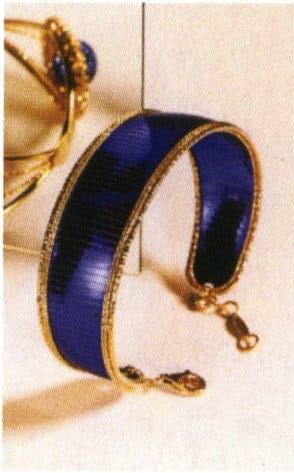
Blue Enamel Bracelet
(2) The Lightness and Heaviness, Softness and Hardness of Colors
The brightness level of the color causes the sense of lightness or heaviness of a color. Colors with high brightness, such as bright yellow, light yellow, and white, evoke associations with white clouds, colorful clouds, cotton, etc., feeling light and ascent. Materials like diamonds and citrine, which have high brightness, give a sense of lightness; colors with low brightness, such as black, dark blue, and brown, evoke associations with heavy metals, rocks, etc., giving a feeling of heaviness and descent. Materials like ink jade, sapphire, and lapis lazuli, which have low brightness, give a sense of depth.

Nude Enamel Pendant

Sapphire-Tone Enamel Pendant

Diamond Pendant
(3) Expansion and Contraction of Color
Different colors have different wavelengths, and their images form at different positions on the retina. Red, orange, and yellow form images on the inner side of the retina, creating a sense of approach, while blue, green, and purple form images on the outer side of the retina, creating a sense of openness. Due to the differences in the imaging positions of colors with different wavelengths, the human eye forms certain illusions: warm colors, pure colors, and bright colors have a sense of expansion and forward movement, while cool colors, dark colors, and dull colors have a sense of contraction and retreat.

The sense of expansion and contraction of color: circles of the same diameter appear larger in warm colors and smaller in cool colors.

(4) The Splendor and Simplicity of Color
Colors with different saturation, brightness, and hue visually produce either splendid or simple feelings. Colors with high brightness and high saturation, such as yellow and red, give a vivid, intense, and splendid impression; colors with low brightness and low saturation, such as dark blue and gray, give a simple impression.
In jewelry, commonly seen rubies and gold give a more splendid feeling, while lapis lazuli and ink jade give a rustic and elegant feeling. When matching colors, multiple colors can be combined to enhance or adjust to achieve different effects.

(5) Emotional Attributes of Jewelry Materials
① Gemstones
- Diamonds symbolize love.
- Ruby symbolizes passion.
- Sapphire symbolizes kindness.
- Jadeite signifies good luck.
- Garnet symbolizes loyalty.
- Amethyst represents peace.
- Peridot signifies harmony.
- Black pearls represent mystery.
- White pearls symbolize health and longevity.
② Metals
- Platinum is rare and resistant to wear, symbolizing pure and precious love.
- Gold symbolizes warmth and nobility.
- Palladium has strong ductility and is wear-resistant and corrosion-resistant, symbolizing preciousness, saturation, and eternity.
- Silver is simple and understated.

Woven bracelet

Jasper pendant

Pearl earrings
4. The Texture of Jewelry
(1) The Texture of Jewelry Materials
The effects of jewelry on the surface texture are diverse, commonly including mirror polish, matte finish, and brushed finishes. Different surface textures of jewelry give different tactile sensations; some are crisscrossed, some have varying heights, some are rough, and some are smooth… The variation in texture creates a sense of rhythm and cadence. These different textures enrich the visual layers of the jewelry and provide varied tactile experiences.
Mirror polish: The most common surface texture for jewelry. Through polishing, surface marks on the jewelry are removed, making the metal surface shiny like a mirror, effectively showcasing the metal’s luster and smooth design.
Matte finish: Hard powder is pressed to create an impact flow that strikes the metal surface, forming a sandy texture and producing a hazy effect. The sandy texture of metal jewelry strongly contrasts with the wearer’s skin. Matte finishes can be coarse or fine, and flexible use can give jewelry different styles.
Brushed finish: Using hard metal wire to polish the metal surface directionally can achieve a brushed texture and satin finish. The fine and uniform brushed texture is widely used, giving a restrained impression. The brushed lines’ depth, thickness, and sequence vary endlessly and are richly diverse.

Mirror polish ring

Matte finish gold ring

Matte finish pendant

Matte finish necklace

Matte finish pendant

Brushed finish bracelet
Mokume-gane: A special technique that presses different colored metals (usually gold, silver, or various colors of K gold) together. After processing, the surface of the jewelry displays a wood grain-like effect.
Peened texture: A texturing technique frequently used by jewelry craftsmen, utilizing the malleability of metal. Hammering the metal creates raised and recessed textures. This handcrafted texture effect is unique, with no two pieces alike.
Fingerprint texture, leaf vein texture, and other unique textures can also appear on jewelry. Their uniqueness has made them highly favored by many.

Openwork Pendant

Lace Filigree Pendant

Textured Belt Buckle
(2) The Luster of Jewelry Materials
For thousands of years, people have loved jewelry deeply, not only because of its cultural meanings, symbols, and connotations but also because its materials are rare and beautiful. People often say “pearly and precious,” where “pearly” and “precious” refer to luster.

Enamel pendant

Jasper inlay bangle

White nephrite pendant

Pearl pendant
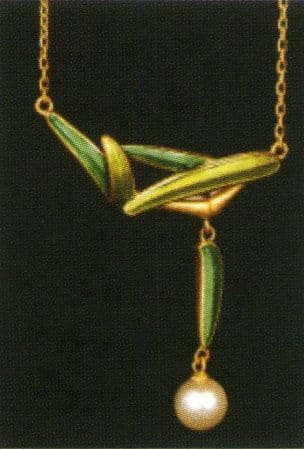
Green enamel pearl pendant (Metallic luster, pearly luster)
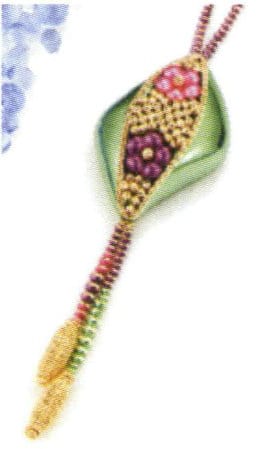
Colored enamel pendant (Metallic Luster)
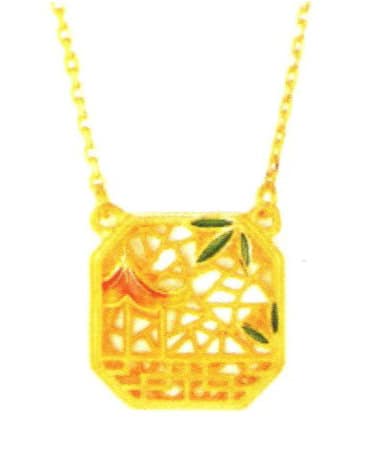
Enamel Pendant (Metallic Luster)

Jadeite (Vitreous Luster)








